In this article you will find a list of travel essentials, suggestions, planning tips, local customs and more to help you get started and prepare for your solo trip to Switzerland as a woman.
If you are looking for a winter packing list to Switzerland, you can find our recommendations here.
Brief history of Switzerland
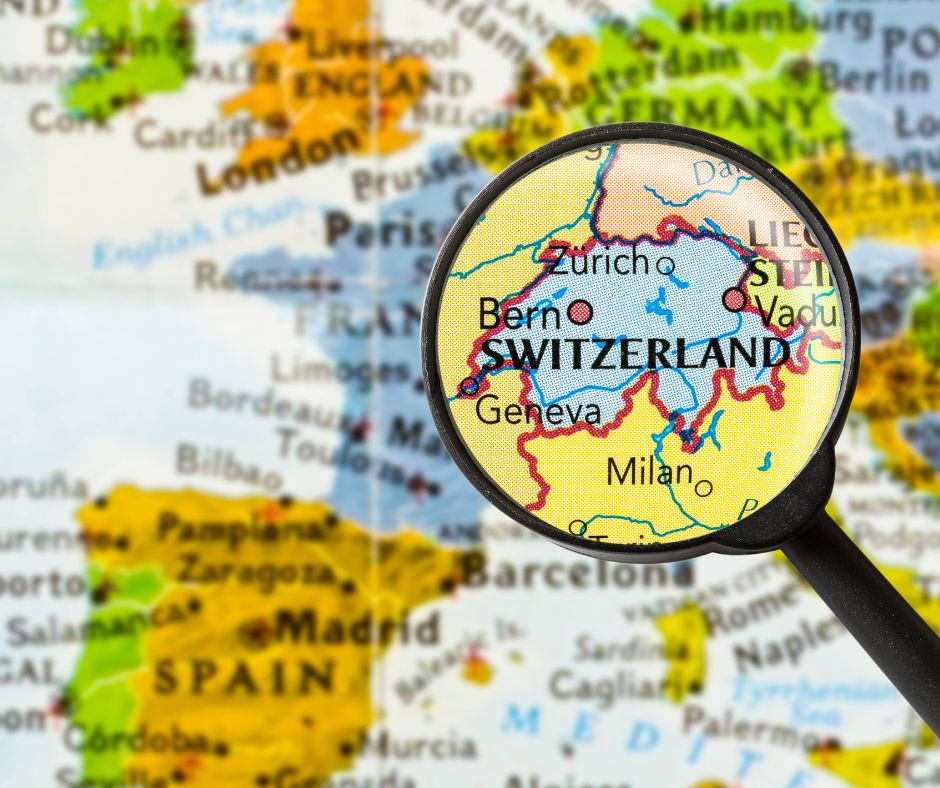
Switzerland is a small landlocked country at the heart of Europe with a long past and a unique present, marked by financial independence, neutrality and a developed economy with one of the highest GDP per capita in the world.
Switzerland’s early and medieval history is similar to that of Austria and Germany as this entire region of central Europe was ruled by the Celts who settled around 500 BC and remained there until the arrival of the Roman Empire of Julius Caesar.
The Romans settled in modern day Basel and stayed in the area until the fall of the Western Roman Empire in the 5th century.
By the 6th century, Switzerland became part of the Frankish Empire under the Merovingians and later the Carolingians and it was later fragmented into numerous small feudal states, bishoprics, and abbeys.
The first signs of Switzerland can be found in 1291 when the three cantons of Uri, Schwyz, and Unterwalden formed a defensive alliance known as the Everlasting League to defend themselves from the expansionist Habsburg Empire.
The Protestant Reformation also arrived in Switzerland but wasn’t unanimously received as the Catholic cantons opposed it, but this did not affect the union of the cantons from remaining loyal to each other.
With the Napoleonic Wars and the Industrial Revolution, Switzerland was annexed to the Helvetic Republic, but continued to fight to remain independent, a perseverance that earned it independence again in 1815 when the country returned to sovereignty and established itself as a neutral country, a view of the world that has been carried to today.
Switzerland as a country was formed in 1848 when the Swiss Federal Constitution was signed and its willingness to remain a federal country with independent cantonal autonomy.
The country remained neutral during WWI and WWII and has evolved into a wealthy financial hub that benefits from secrecy laws and neutrality.
Quick facts about Switzerland
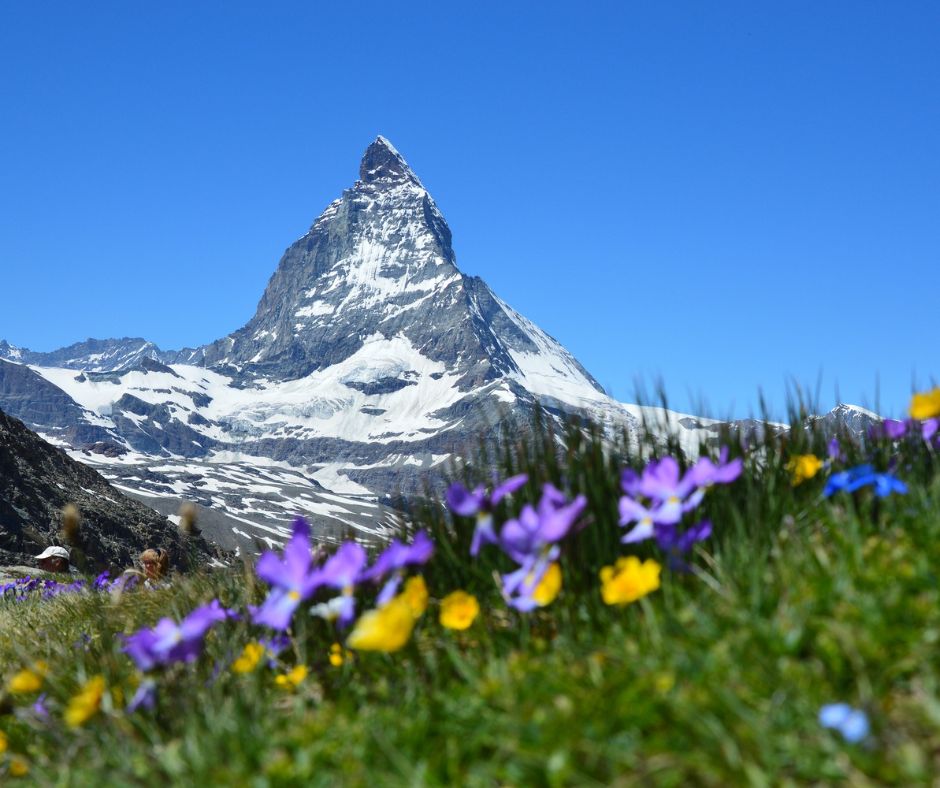
Switzerland is a very unique country in Europe with lots of quirks that make it a very interesting destination. I have put together a list of fun and interesting facts below.
- Four Official Languages: For such a small country of just over 8 million people, it’s pretty interesting that there are 4 distinct regions called Cantons, each with its own official languages: German, French, Italian, and Romansh.
- Neutral: Switzerland is most famously known for being neutral and has not participated in any international conflicts since 1815. It has not joined the United Nations or any other international organization but it does maintain a strong military and requires mandatory military service for men. It is also the headquarters of the International Committee of the Red Cross which was founded in Geneva, in 1863, and of the World Health Organization (WHO).
- Inventors: Despite being a small country, many famous inventions come from Switzerland. The Swiss army knife (Victorinox), velcro (de Mestral), Absinthe (Ordinaire), milk chocolate (Peter), muesli (Bircher-Brenner), the world wide web (Berners-Lee), instant coffee (Nestlé), and even LSD (Hofmann) are all Swiss inventions.
- Banking secrecy: Recent international agreements have led to greater transparency in Switzerland’s historical banking secrecy, but its reputation still attracts many global clients.
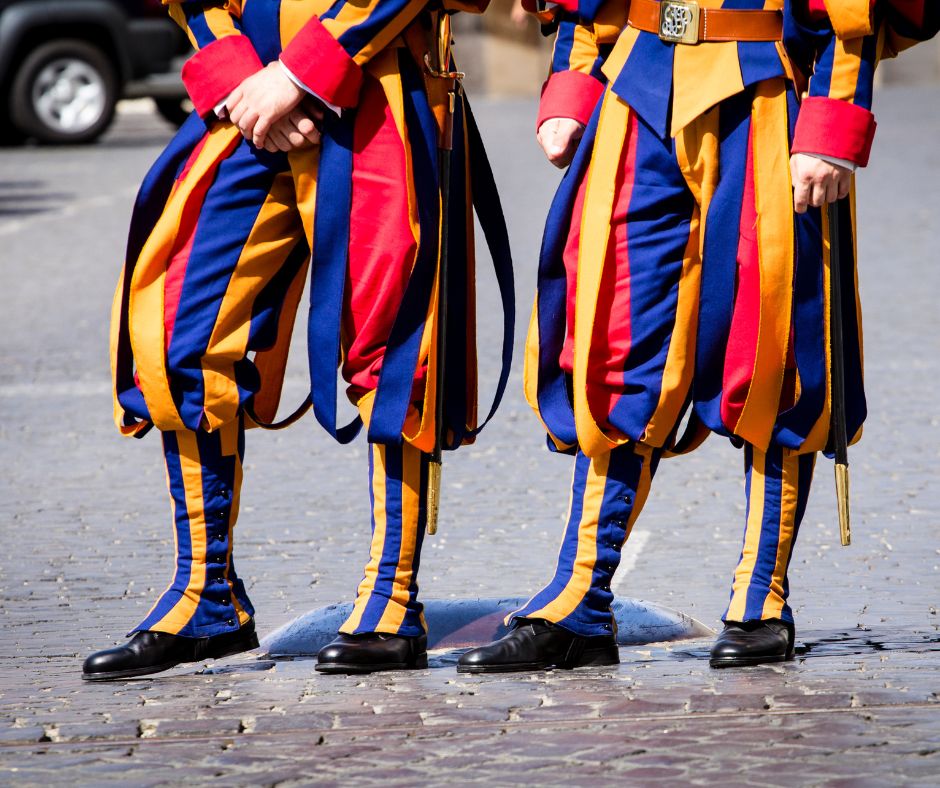
- Protectors of the Pope: The Swiss Guard is the small force responsible for the safety of the Pope and the Vatican who they have been serving since 1506. They are famous for their colorful Renaissance-era uniforms.
- Unique form of Government: Swiss citizens have a high degree of political involvement, with frequent referendums where they can directly vote on laws and policies. This form of direct democracy is unique to the country. The country is a federal republic with a collective head of state, the Federal Council, made up of seven members. The formal head of government is the President of the Swiss Confederation and it is a position that rotates annually among the seven members of the Federal Council.
- No capital: Switzerland does not officially have a capital, but Bern is considered such because it is where the Government sits.
- Longest Staircase: Switzerland is home to the world’s longest staircase, the Niesenbahn funicular’s staircase, which has 11,674 steps and runs alongside the railway track up the Niesen Mountain.
Switzerland travel tips
In this section we want to share general Switzerland travel tips to help you plan your trip.
When to visit
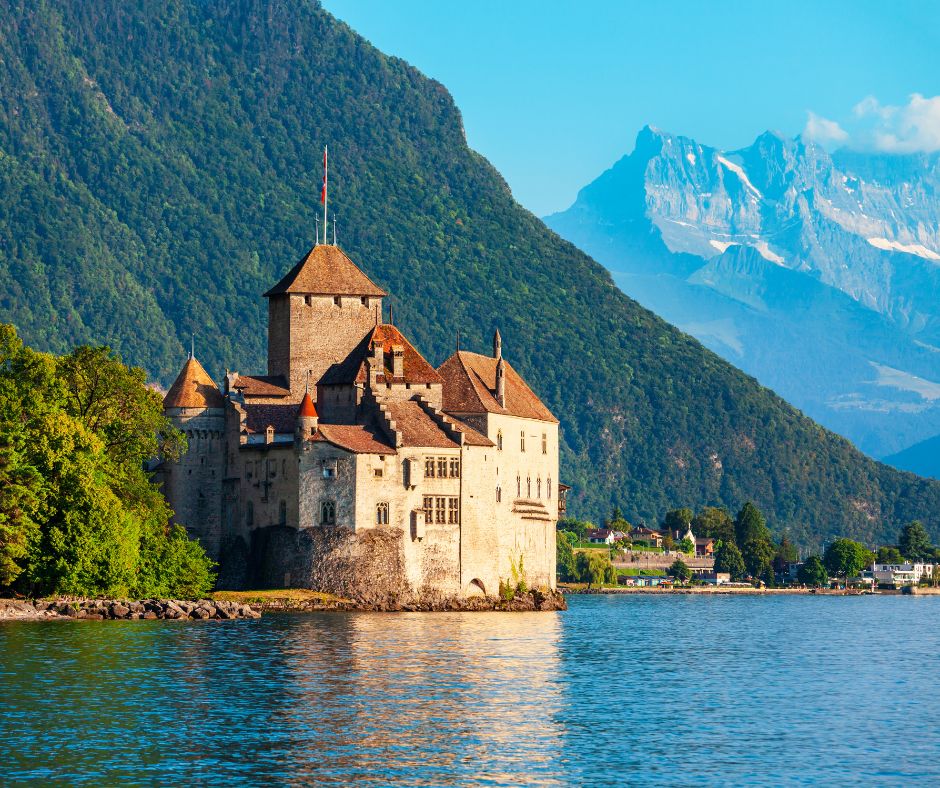
Switzerland is a year round destination but every season is markedly different.
The summer months are the most popular for outdoor activities, hiking and to enjoy the beautiful landscapes the country has to offer. The mountain hiking trails are busy and the country comes alive.
Come winter, Switzerland comes alive with snowbirds looking for the slopes in the country’s famous ski resorts and quaint Alpine towns.
Here are the monthly temperatures and rainfall in Zurich:
| Month | Days with rainfall | Hours of sunshine | Min Temperature (°C / °F) | Min Temperature (°C / °F) |
| January | 10 | 2 | -2 / 28 | 3 / 37 |
| February | 8 | 3 | -1 / 30 | 5 / 41 |
| March | 11 | 4 | 2 / 36 | 10 / 50 |
| April | 13 | 5 | 5 / 41 | 14 / 57 |
| May | 14 | 5.5 | 10 / 50 | 19 / 66 |
| June | 14 | 7 | 13 / 55 | 22 / 72 |
| July | 13 | 7 | 15 / 59 | 24 / 75 |
| August | 13 | 7 | 15 / 57 | 24 / 75 |
| September | 11 | 6 | 11 / 52 | 20 / 68 |
| October | 10 | 4 | 7 / 45 | 15 / 59 |
| November | 10 | 2 | 2 / 36 | 8 / 46 |
| December | 9 | 2 | -1 / 30 | 4 / 39 |
Here is an overview per season:
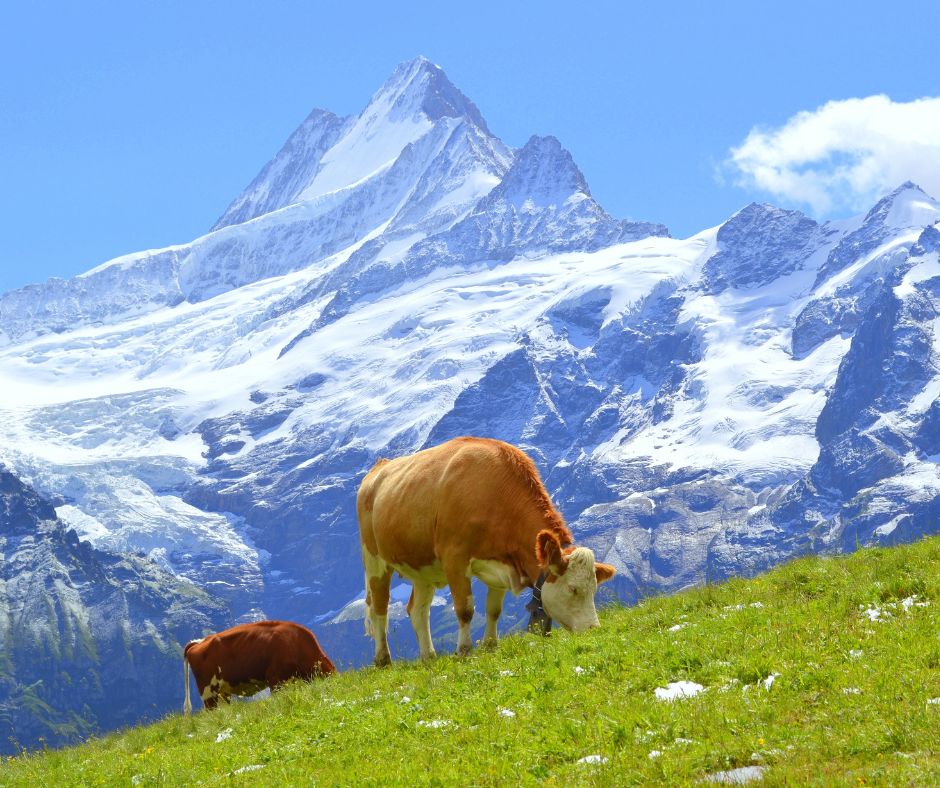
- Spring (April and May): Flowers in bloom in the mountains, the snow melts in the mountains and the rivers flow heaviest. Good time for the cities which are less busy but not as cold. Depending on where you want to go, mountain passes may still be closed.
- Summer (June to August): Warmer but not really hot, best time for hiking and to spend time outdoors, hiking and swimming in the lakes. Lots of festivals going on and longer days. But also, the busiest season with highest prices and the biggest crowds at main tourist spots.
- Autumn (September to November): Fall foliage makes part of the mountains change in color while the evergreen forests remain green. Like in the spring, tourists are far fewer and this is the least busy time of the year; no skiing, no summer temperatures and no Christmas markets means there isn’t a key draw to the country. The weather can be unpredictable and snowfall often starts in November.
- Winter (December to March): Coldest time of the year with minimum temperatures below freezing and snow on the mountain tops and villages. Christmas time sees the highest number of visitors coming to experience the magical, postcard-perfect, snow-covered Alpine villages with their wooden houses and pointy roofs. December is a magical time to be in Switzerland and prices reflect this. The beginning of the year sees skiers and snowboarders flocking to enjoy the powder snow and cozy villages.
Public holidays and festivals in Switzerland
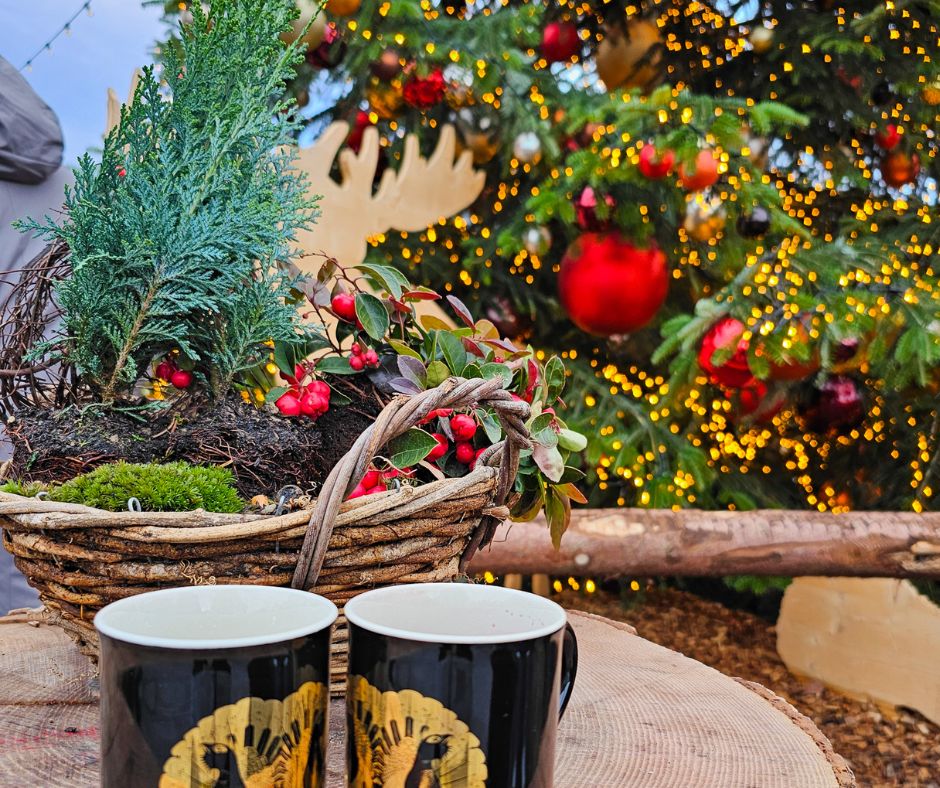
Public holidays close all businesses in Switzerland and make it hard to explore the country but are also an opportunity to experience a different side of the culture.
Switzerland as a whole observes several celebrations:
- 1st January – New Year’s Day.
- Easter Friday and Monday (varies every year) – Resurrection of Jesus Christ.
- Ascension Day (40 days after Easter) – Ascension of Jesus into heaven.
- Whit Monday (50 days after Easter) – The Holy Spirit’s descent on the apostles.
- 1st August – Swiss National Day, celebrating the founding of the Swiss Confederation in 1291. Marked by fireworks, bonfires, and celebrations across the country.
- 25th December – Christmas Day.
- 26th December – St Steven’s Day / Boxing Day.
There are also Canton-specific holidays celebrated in the various regions that are related to Protestant or Catholic holidays such as Epiphany Day (6th January) or All Saints day (1st November) in the Catholic Canton.
Switzerland is known for culture and there are a few festivals that embody this aspect of the country:
- Montreux Jazz Festival takes place in early July on the shores of Lake Geneva and is one of the most famous in the world.
- Locarno Film Festival, taking place in August in the city of the same name, is one of the oldest in the world and known for its open-air screenings in the main square.
- La Fête des Vignerons is a UNESCO-recognized festival that takes place every 20-25 years (last time in 2019) and celebrates viticulture, wine making, etc.
Besides festivals and celebrations, there are other events that have made Switzerland famous:
- The World Economic Forum takes place in January in the small Alpine village of Davos and is one of the most significant and influential gatherings of global leaders in business, politics, civil society and the intellectual space to discuss the world’s most pressing issues, from climate change to international security to innovation or technology.
- The WEF Young Global Leaders Summit gathers emerging leaders in the context of the World Economic Forum.
- Art Basel is one of the most prestigious events for art collectors, artists and galleries to showcase their work and connect.
Passport and visa requirements
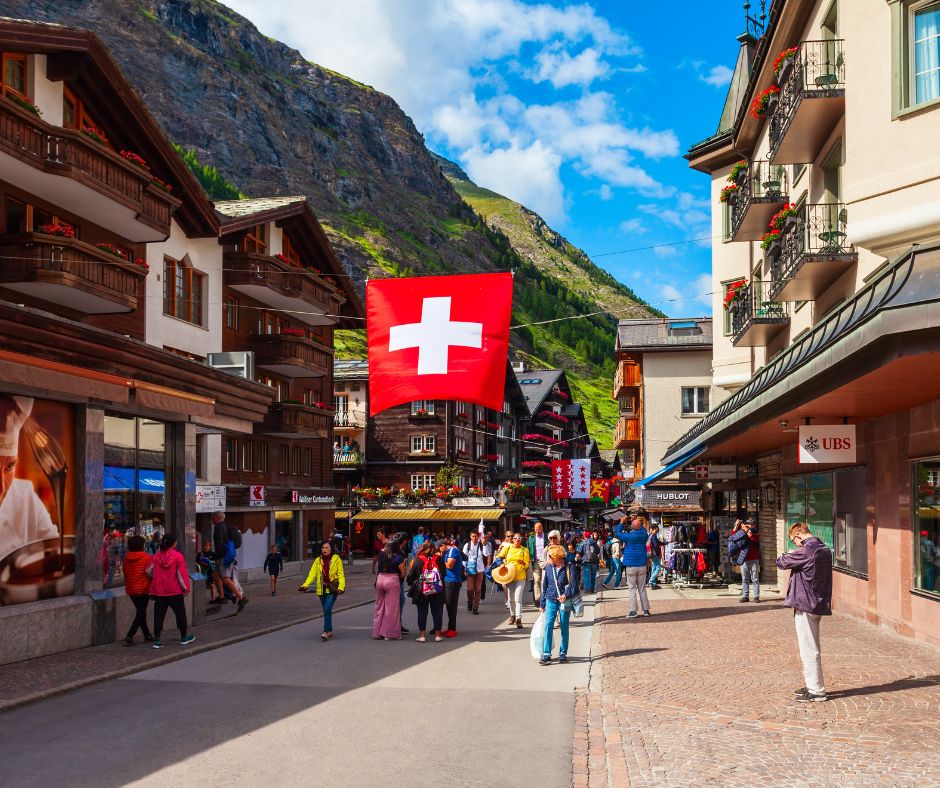
In this section we will look at the requirements to enter Switzerland.
Schengen Visa: Switzerland is part of the Schengen Zone and the European Economic Area (EEA) but not of the European Union.
If you are a citizen of a non-Schengen country without a visa-free travel agreement with the area you need a Schengen visa. You should apply for it at the embassy of the country you plan to first enter the zone through. Your Schengen visa is typically valid for up to 90 days of travel within the zone in a 180 days period.
While the general process is similar for all countries within the Schengen zone, the requirements do change and can take weeks to process so allow enough time for this. If you are unsure about the visa application process for Switzerland you can use a service such as iVisa to do it for you.
Passport Validity: We strongly recommend that you make sure your passport is valid for at least 6 months after departure and has 2 empty pages.
Health and safety
Nobody wants to get sick when on vacation but, if the worst is to happen, it pays to be prepared.
Bring all the medication you’ll need: During your trip to Switzerland, you will typically never be too far from a doctor, a hospital and a pharmacy unless you plan to go skiing or hiking in the Alps. But we strongly recommend you bring any prescription medication you may need and enough of it to last you the entire trip.
Your specific medication may not exist in Switzerland, or it may require a prescription you need to see a doctor for, so save yourself time and hassle by bringing everything you may need with you. Review what you should bring in your first aid kit here.
IMPORTANT: Some prescribed and over-the-counter medicines available in your country might be considered controlled substances in Switzerland. A doctor’s prescription including generic names, is required in all cases, which should mention your details, the types of medicine and the condition treated. More details here.
Get that coverage: We never leave the house without purchasing extensive medical and travel insurance coverage and this is why we make it mandatory to join our tours. You should make sure that you have adequate medical insurance to cover any unforeseen medical expenses. Unexpected accidents do happen, and if you needed to be evacuated back home with an injury, the medical bill could bankrupt you.
The best travel insurance will differ for each traveler, depending on the nature, style, and length of your trip, so we recommend using an aggregator and comparison tool such as Travel Insurance Masters to find the right one for you depending on what coverage you want, age, location, trip, etc.
For European Economic Area (EEA) residents, carry an European Health Insurance Card (EHIC) or a Global Health Insurance Card (GHIC) as this will allow access to state-provided healthcare at a reduced cost, or sometimes for free, for emergencies and accidents.
IMPORTANT: This is only medical emergency cover and does not substitute adequate travel insurance; it does not cover medical evacuation, repatriation or mountain rescue.
In case of emergency: Switzerland’s emergency services number for immediate assistance with fire, police, and ambulance services is 112, the same as in all other European Union and EEA. Other important numbers:
- Police and Mountain rescue – 117
- Emergency Medical Service- 144
- Fire Department – 118
- REGA Rescue helicopters – 1414
Tap water: Tap water in Switzerland is considered safe for drinking and of exceptional quality.
Safety in Switzerland for solo female travelers
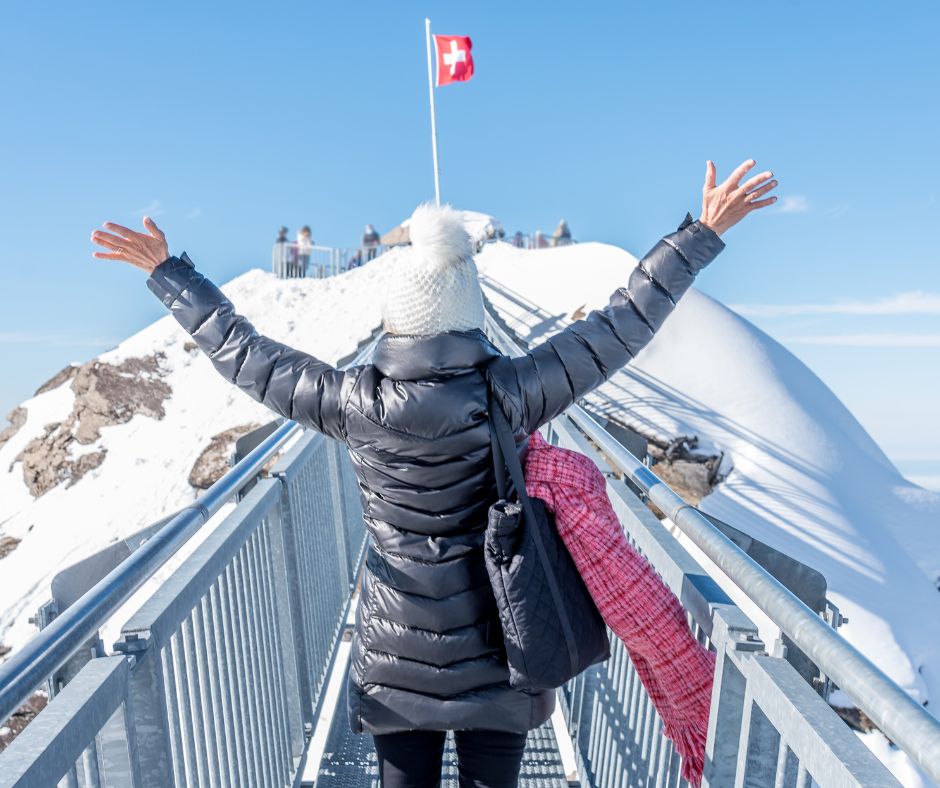
Switzerland is considered one of the safest destinations for solo female travelers, and there is practically no crime.
If you’d like to add another layer of protection in case of petty theft or the risk of pickpocketing, use a slash and theft proof cross-body bag like the ones we listed in this article.
Read our full article on general travel safety tips here.
Getting to Switzerland
Switzerland is a mountainous but well-connected country with several airports and one of the most extensive and well maintained rail networks in the world.
The country’s main airport and global hub is in Zurich (ZRH) and serves as the headquarters of the national carrier Swiss Airways, part of the Lufthansa Group.
There are also several other well connected regional airports in Geneva, Bern and Lugano. The unique EuroAirport Basel-Mulhouse-Freiburg (BSL/MLH/EAP), on the border between Switzerland, France and Germany, serves the three cities and countries at once and is also the gateway to the small country of Liechtenstein.
Besides flying in, you can also access Switzerland by road from any of its neighboring countries with whom it has abolished borders as part of the European Economic and Schengen Area agreements.
Switzerland is well connected by road to Liechtenstein in the East, with whom it shares a long but skinny border, with Germany in the north, Italy in the South and with France in the West.
Many arrive in the country by road from nearby countries, as this is the most efficient way to get around the country.
Getting around Switzerland
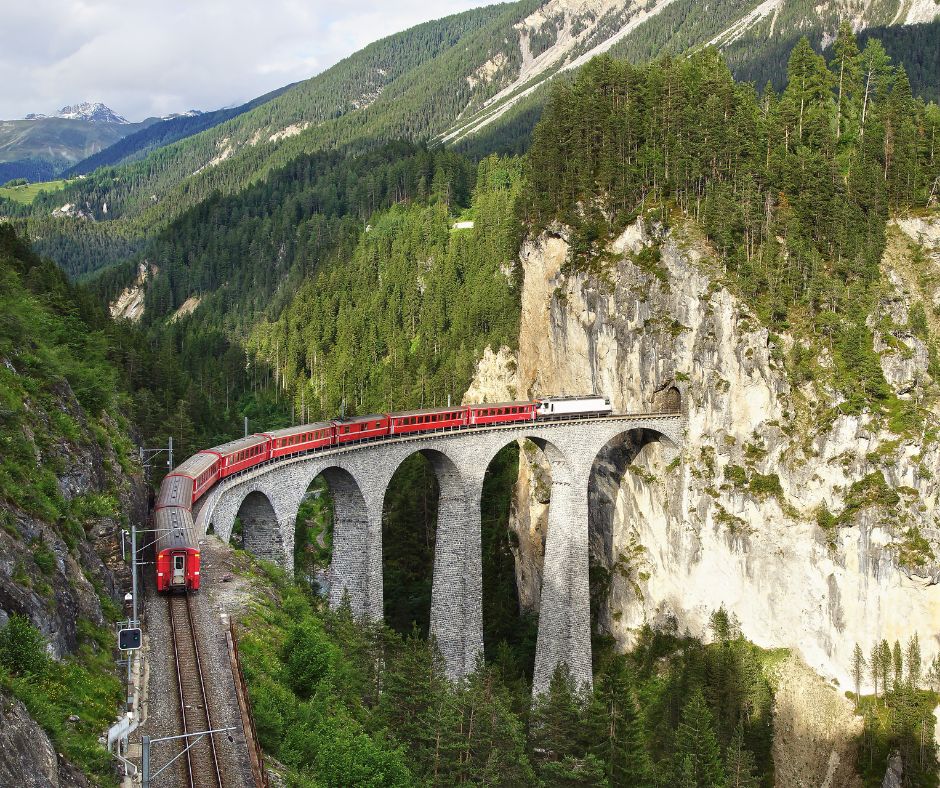
Switzerland is most easily explored by car because a lot of the main points of interest are remote. Although expensive, this is probably the most convenient way to get around. Beware that, in the winter, Alpine roads may require experience driving in the snow.
Pro tip: Remember to buy the toll sticker that you need to drive through motorways. You can purchase it at the border, at petrol stations or online.
If you don’t want to or can’t drive, it is perfectly possible and enjoyable to explore by train and the country boasts one of the most extensive rail networks in the world with several sightseeing trains offering beautiful views over mountain passes that are engineering feats.
Swiss Federal Railways (SBB/CFF/FFS) offers extensive and always on time trains to pretty much all the main cities and smaller villages. Download the SBB Mobile App for help planning your trip and tracking train schedules.
Pro tip: If you plan to travel around by train, you will be better off purchasing a Swiss Travel Pass which gives you access to unlimited use of public transportation. Switzerland is an expensive country and even public transportation is pricey.
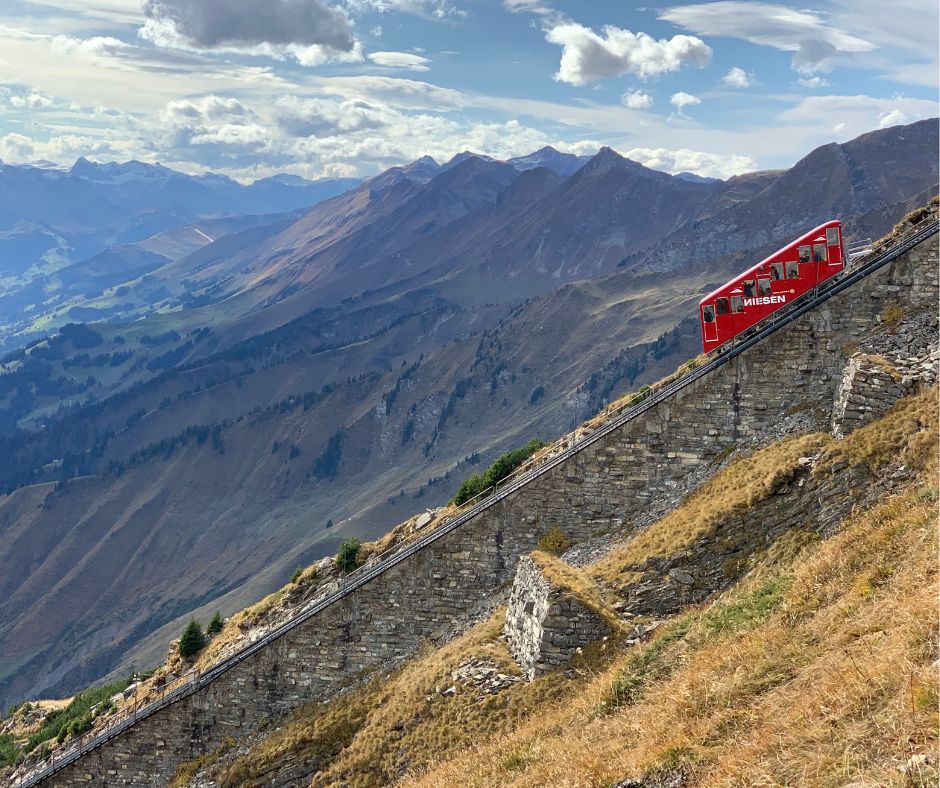
Trains are well catered to the Swiss outdoorsy nature and have ample space for luggage, ski equipment, bicycles, etc. Train etiquette is important and will be followed by the locals.
- Quiet zones are where noise is to be kept to a minimum, and that includes talking and using your phone without headphones or letting it constantly beep with notifications.
- You must have your ticket handy to show to the train staff. Remember to validate it if it was required.
- Take all your rubbish with you and leave your seat space tidy.
- Eating and drinking onboard is fine and most Swiss will bring their own food.
- Take your reserved seat if seating was pre-assigned.
- Avoid encroaching on others with your luggage, instead, store it in the dedicated compartments. Switzerland is a very safe country and theft is rare.
- Greet fellow train travelers with a simple nod or a hello (bonjour in the French speaking part, Ciao in the Italian Canton and Grüezi in the german side).
For an experience like no other, check out the Glacier Express and the Bernina Express both of which cross the Alps in glass cars designed to offer stunning views of the landscapes around. Although pricey, these are two of the most beautiful train rides in the world and cross UNESCO-listed valleys and bridges.
Main cities in Switzerland such as Zuich, Base and Geneva, are well connected with their surroundings by trains and have trams that will take you around the city in an environmentally friendly way. You can buy tickets before you board and day passes tend to be cheaper.
For water lovers, Switzerland is a great place to enjoy both scenic and practical boat rides on some of its most beautiful lakes in Zurich, Geneva and Lucerne.
Uber, and other ride hailing apps, operate in main cities and are an easy alternative to get to and from the airport.
Because of its mountainous landscapes, one of the most efficient ways to get around the ski slopes and peaks is by cable car, cogwheel train or funicular. Some of the most beautiful and popular ones are tourist attractions in the summer and the main means of transportation for skiers in the winter season.
The Gornergrat Railway with views of the Matterhorn and the Jungfrau Railway, that takes you to the Top of Europe at Jungfraujoch (featured in James Bond On Her Majesty’s Secret Service movie), are the two most popular sightseeing rides.
For Those who aren’t afraid of heights, the tricable gondola Eiger Express to the Eiger Glacier and the 10-person aerial gondola to Männlichen offer spectacular views.
How many days to spend in Switzerland
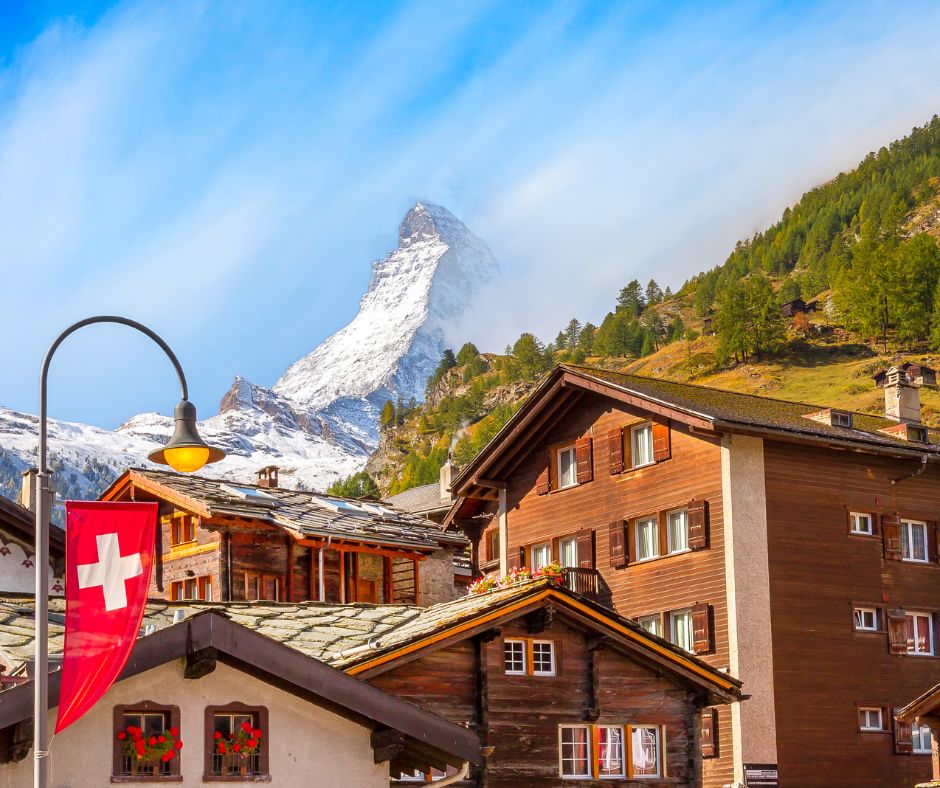
Switzerland is a small but mighty country with lots to see and do.
You could spend a long weekend in any of the major cities with a day trip to a nearby point of interest, or extend your stay to 1 to 2 weeks if you plan to head outdoors, go hiking or enjoy the many Alpine villages.
Long weekend options in Switzerland:
- Zurich is the most obvious option for a first time visitor to Switzerland owing to its well connected airport, The city has a few points of interest that can be explored in a day. You can then take the train to Lucerne for a day of sightseeing or head to Schaffhausen to visit the Rhine Falls, Europe’s largest waterfall, which can be explored on a boat trip.
- If you base yourself in Lucerne you can take a day trip to Zurich or go to Alpnachstad to ride the world’s steepest cogwheel railway up to Mount Pilatus for amazing panoramic views.
- If you fly into Geneva you can visit the United Nations Office and the Old Town then take the train to Montreux and visit the Chillon Castle.
- Bern has a UNESCO-listed city center and is a great place for foodie lovers. Explore the city then take the train to Emmental to visit a traditional cheese farm.
If you have a week in Switzerland you have the option to explore one of the main regions.
Highlights of Switzerland: You can start in Zurich, continue to Lucerne and from there explore the Interlaken region with its beautiful lakes (Lake Thun or Lake Brienz), the Jungfrau Railway to the Jungfraujoch, the “Top of Europe” spot and the surrounding area.
Cities and Alpine towns: My first trip to Switzerland was in the winter months and I focused on Geneva and the Alpines villages, with their cozy atmosphere and incredible landscapes. I drove into St. Moritz from Munich, in Germany and after enjoying its quaint Christmas market, I boarded the Glacier Express to Andermatt, the cutest ski village. From there, I took the train to Zurich and spent time there with a day trip to Lucerne. I could have also topped at Zermatt and visited the Matterhorn.
If you have longer than a week, you can explore most of the country, including its four main cities, the landscapes and viewpoints and some hiking. Combine renting a car with train transport for the most convenient and affordable plan.
Top places to see and things to do in Switzerland as a solo female traveler
In this section, you will find our favorite places to visit and things to do in Switzerland if you are traveling solo.
Alpine views
You can’t visit Switzerland and not explore one of the two most important viewpoints / mountains, the Matterhorn or the Jungfraujoch, both of which will give you the most breathtaking panoramic views of the Alps.
Scenic train rides
I have mentioned it before, but Switzerland is the destination for train lovers and those who love beautiful landscapes. I took the Glacier Express in winter and the views left me speechless for the duration of the ride.
With floor to ceiling glass windows that make you feel like you are floating above the mountains, this scenic ride is hard to beat. The journey connects Zermatt with St. Mortiz and takes half a day end to end but you can alight at some of the other stops.
Zurich
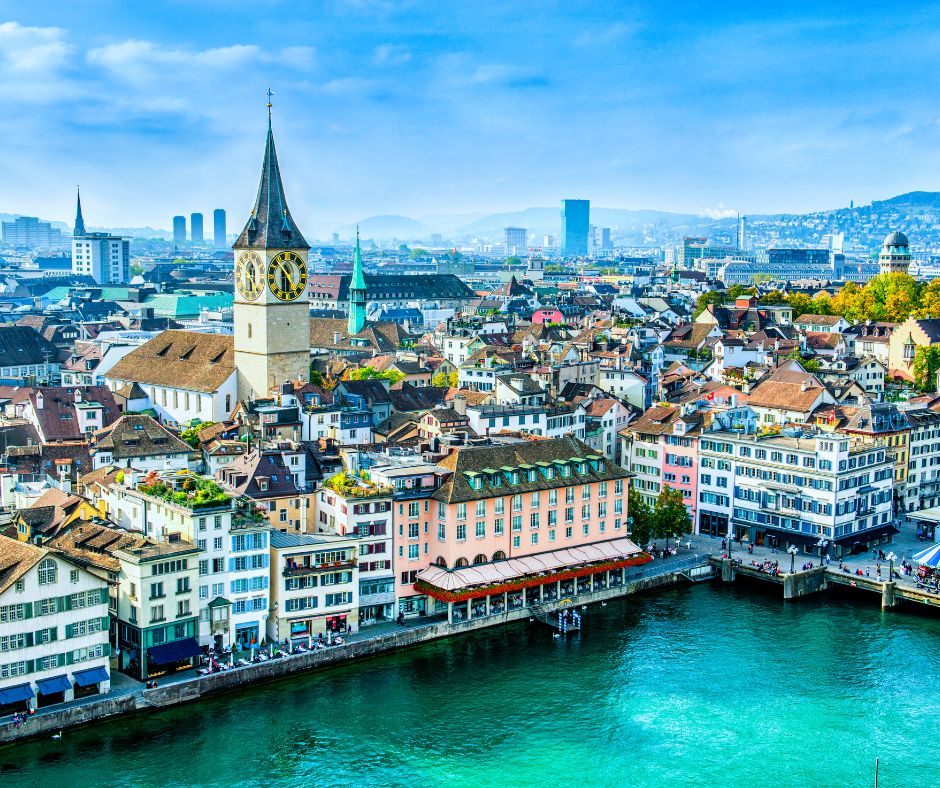
Switzerland’s main financial center is also the country’s largest city and has enough cultural offerings for a day of exploring. Located by Lake Zurich, its city center is mostly pedestrian and located along the river.
Stroll through the Old Town and the lake shore, or stop at one of the cafes for hot chocolate.
Geneva
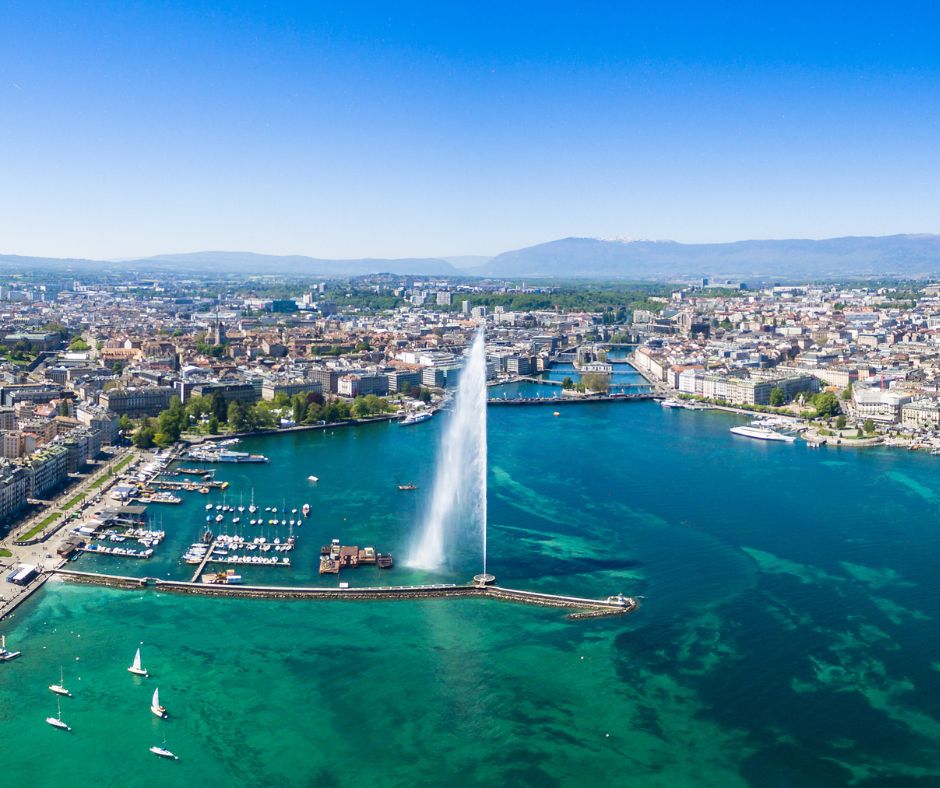
Located on the shores of Lake Geneva, this is a laid back city that serves as the headquarters of the United Nations and has a quaint Old Town. Check out the Jet d’Eau on the lake, an illuminated water fountain that is a symbol of the city.
Bern
The city’s Old Town is listed as a UNESCO World Heritage Site and was built between the 12th century and the 16th century and restored in the 18th century.
Lucerne

This picturesque city, 1-hour from Zurich, offers a perfect blend of natural beauty and cultural attractions.
Start with a walk across the iconic Chapel Bridge (Kapellbrücke), a 14th-century wooden bridge adorned with historic paintings. Visit the Lion Monument, a poignant tribute to Swiss Guards who died during the French Revolution. Explore the Swiss Museum of Transport which showcases the history of transportation and communication.
For stunning views, take a boat cruise on Lake Lucerne or ride the world’s steepest cogwheel railway up to Mount Pilatus.
The Old Town, with its preserved medieval architecture, is perfect for leisurely strolls and shopping.
Grindelwald
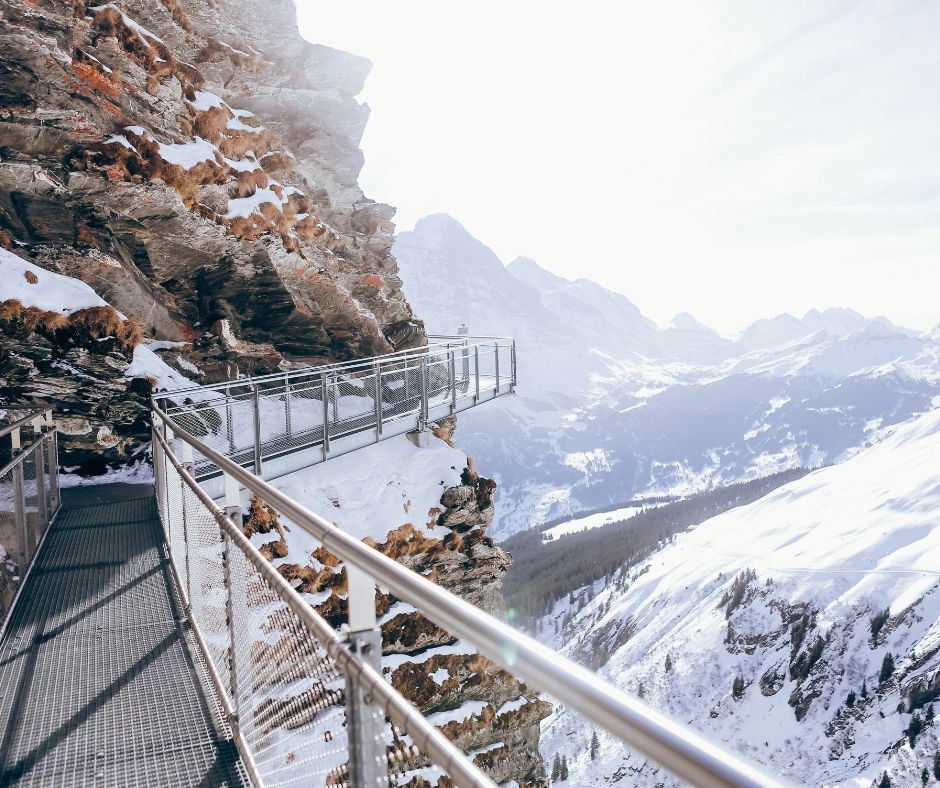
If you are into hiking, Grindelwald is one of the best areas to base yourself at. Fromhere, access lots of hiking trails and skiing in the winter.
St. Moritz and Zermatt
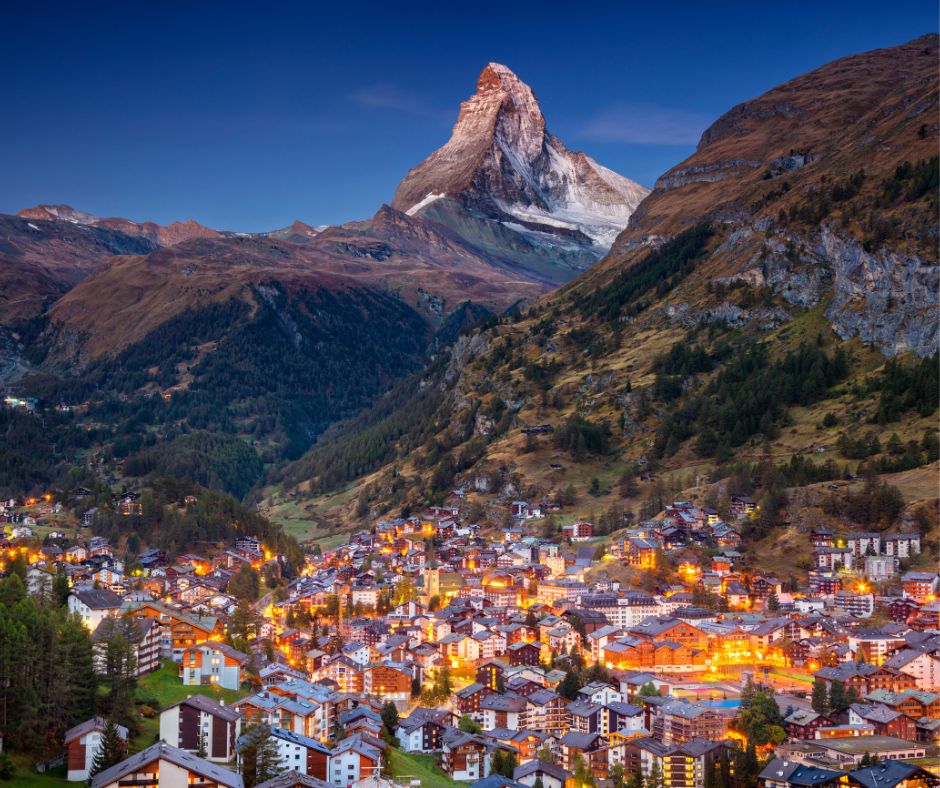
It doesn’t get any posher than the Alpine ski resorts of St. Moritz and Zermatt in the winter.
The destination for the rich and famous, St. Moritz invented the concept of Alpine winter tourism, skiing and wellness thermal spas in the 19th century and has remained a destination for celebrities since.
The town is a pioneer in the installation of ski lifts, street lights and golf tournaments and has hosted the Winter Olympics twice in 1928 and 1948.
It all started when a local hotelier decided that he needed to do something to entice his thermal-spring obsessed summer guests to return in the winter, and that led to the beginning of the winter ski tourism to the town.
Badrutt’s Palace Hotel and Kulm Hotel in St. Mortiz, the epitome of Swiss luxury hospitality with a price to match, continue that luxury tradition to the 21st century.
The next most fabulous Alpine village after St. Moritz is charming Zermatt, the gateway to the Matterhorn, one of the most famous mountains in the world, featured on the packaging of the Toblerone chocolate.
Zermatt is a car-free village and the base to explore the surroundings. Take The Gornergrat Railway to the summit for the most incredible panoramic views of 30 peaks on a clear day, or go skiing in the winter.
For a more laid back alternative to St. Moritz and Zermatt, head to Andermatt, the up and coming younger sister village that is as quaint but does not have any of the stand-offish glamorous attitude of the other two.
Cheese tours in Emmental or Gruyères
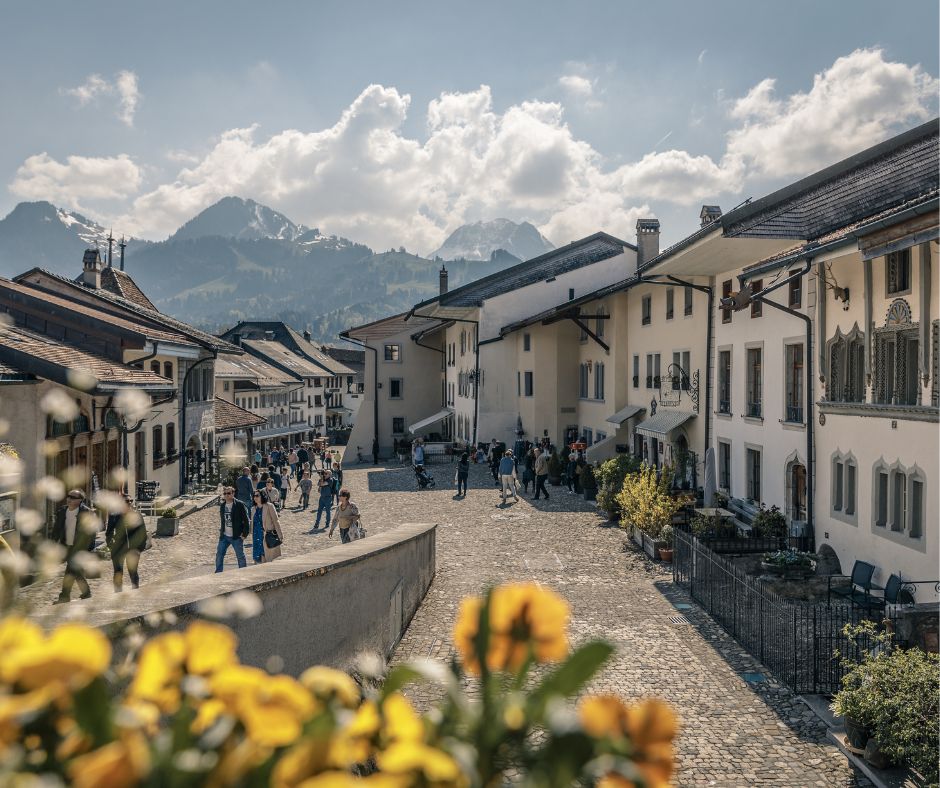
Switzerland is best known for cheese and chocolate and the Tourism Board has put together a Grand Tour of Switzerland that explores the country’s four best cheese regions and lists dairy farms open to the public. These include Appenzeller, Emmental, Gruyere and the cheeses in the Einsiedeln region.
Chocolate factories
The next best food Switzerland is famous for after cheese is chocolate, but it is not because this fruit is grown in the country, but because this is where the technique to smoothen chocolate was invented.
When in Switzerland you can visit some of the best chocolate factories from brands as famous as Lindt or House of Läderach, both near Zurich, for tours, tastings and to buy some of their creations.
Travel essentials for Switzerland
In this section we will look at a range of other things to consider when traveling to Switzerland as a solo female traveler.
Staying connected: Public free WiFi hotspots are easy to find but if you want to be connected all the time, explore roaming options with your home mobile provider, or buy an eSIM like Airalo, AloSIM or Holafly (unlimited internet and a 5% discount).
Make sure your phone is unlocked so that a foreign SIM card or eSIM will work, and get the store staff to help you set up the new SIM card before leaving the shop so they can help you with any settings that need changing.
IMPORTANT: If you are roaming with a European Union SIM card, free roaming applies to the entire Union plus the European Economic Area members of Iceland, Liechtenstein and Norway, but not to Switzerland.
Because there is no obvious border between Switzerland and its neighboring countries, you may find yourself crossing over without realizing and may incur unexpected roaming rates. Watch your phone closely when near the border to identify the telecom operator your phone is connecting to, switch to manual selection or turn off roaming as soon as you approach the border.
Switzerland plugs: Switzerland uses Type C and J electrical outlets and plug with two or three round pins. If you are traveling to Switzerland from a country that uses a different plug type, such as Type A (used in the US and Canada) or Type G (used in the UK), you will need a plug adapter to fit your devices into Switzerland electrical outlets.
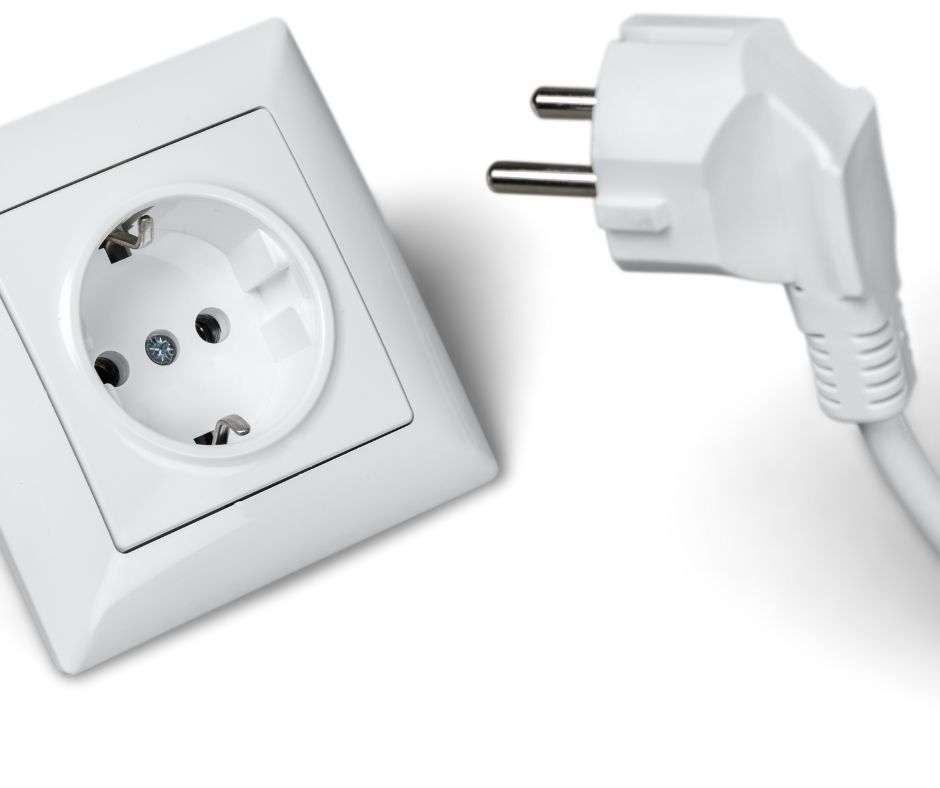
Dual voltage: Switzerland uses a standard voltage of 230 volts AC (50 Hz), which is much higher than Canada and the US’s 120 AC (60 Hz). Many modern electronic devices, such as laptops and smartphones, are dual voltage and only require a plug adapter to be used in Switzerland.
Regardless, it’s important to check the voltage ratings on your specific electrical devices to ensure they are compatible before use, or bring along a voltage converter to make sure you don’t fry your favorite hair tools.
Currency: Switzerland uses the Swiss franc and credit cards are widely accepted everywhere. There are ATMs in all the main cities and cash is rarely needed.
Pro tip: Avoid ATM machines that are standalone and not attached to a bank like Euronet. These charge exorbitant fees and give an extremely poor exchange rate, as they are an exclusive ATM business. Additionally, if your card gets taken, it is much harder to retrieve it than from a bank.
Tipping culture: Tipping in Switzerland is not mandatory but will be expected at restaurants and other eateries. Service charge will most likely already be included in your bill but if it is not, leave 10%.
Short business hours. Switzerland is a relatively formal and people-oriented country where work does not trump family or personal time. Businesses and shops close at 5pm and dinner is early, from 6pm onwards. Sundays are extra quiet family time devoted to outdoors activities and most businesses are closed. Even in the main cities, it is hard to find restaurants open past 9pm so plan accordingly.
Basic German
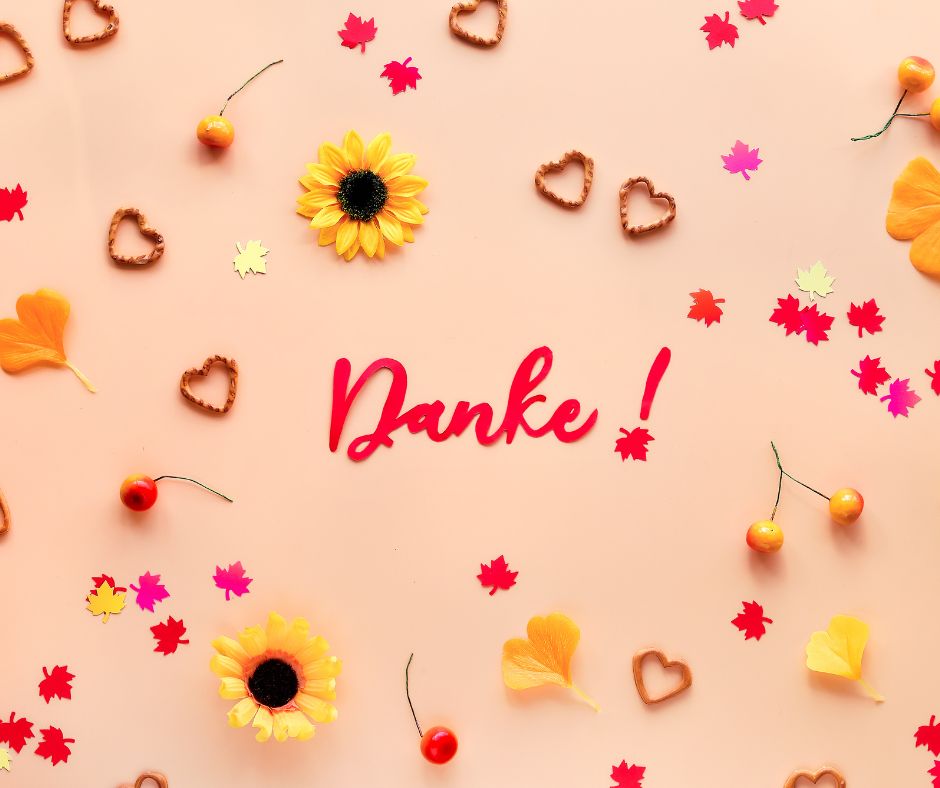
There are three national languages spoken in Switzerland, German, French and Italian although German is the native language of over 60% of the population.
Below are some useful local German words:
- Hallo (“hallo”): An informal way to say “Hi,” similar to “Hello,” often used among friends.
- Guten Morgen (“goo-ten mohr-ghen”) – Good morning.
- Guten Tag (“goo-ten tahk) – Good day/afternoon.
- Gute Nacht (“goo-ten nahkt”) – Good night.
- Auf Wiedersehen (“auv-veeder-sen”) – A more formal Goodbye.
- Tschüss (“chooss”): A common way to say “Goodbye,” informal and often used among friends.
- Wie gaht’s? (“vee gahts?”): This means “How are you?” and is a casual way to ask someone about their well-being.
- Danke (“dahn-keh”): The word for “Thank you,” commonly used in everyday interactions.
- Bitte (“bit-teh”): It means “Please” or “You’re welcome,” depending on the context.
Local Cuisine
Gastronomy in Switzerland is heavily influenced by its neighbors, the weather and the mountainous characteristics of the country.
Best Foods to try in Switzerland
Some of the most popular must try:
- Rösti: This tasty potato dish looks like a giant hash brown and is usually a side dish and can be topped with cheese, bacon, or eggs.
- Käsespätzle: This local version of mac and cheese is made with pasta that is layered with cheese and oven baked until melted. It is usually topped with fried onion.
- Alplermagronen: Sometimes referred to as Alpine macaroni, this is a hearty pasta dish made with potatoes, cream, cheese, and onions, often served with applesauce.
- Swiss sausages: Local sausage made with all kinds of meat and typically eaten with bread, mustard, and a beer. The most popular ons is cervelat, made with a blend of meats and spices.
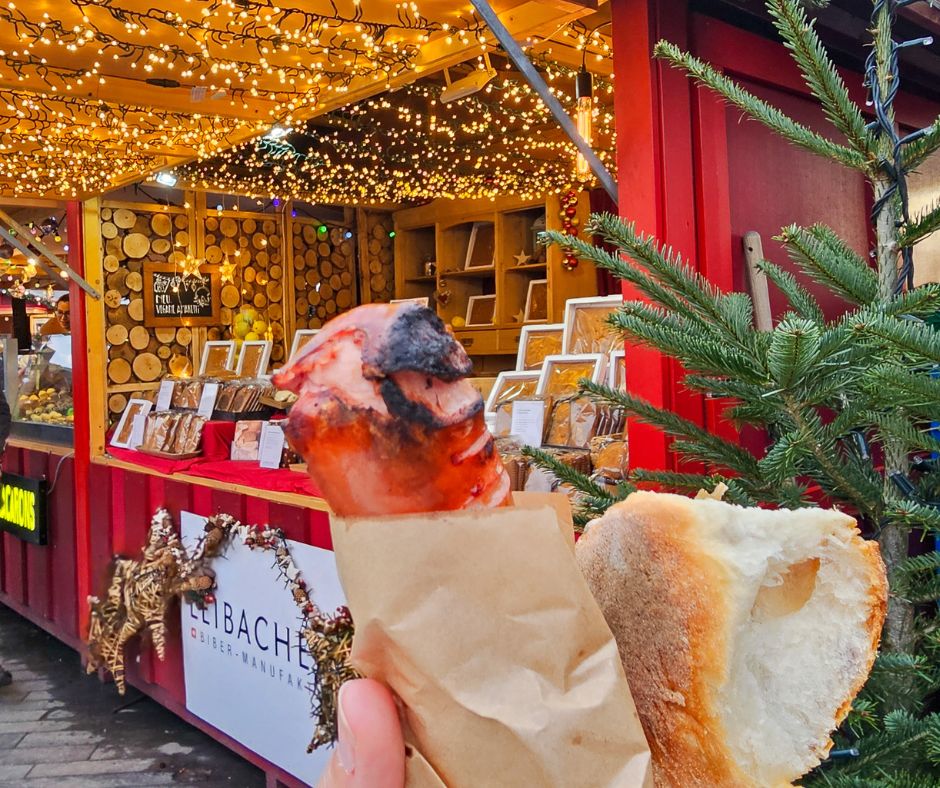
- Cheese fondue: Melted cheese, usually Gruyere or Emmental, mixed with wine, garlic and a touch of nutmeg, eaten with bread you dip into a pot that sits over a portable open flame to keep the cheese melted and warm. This indulgent Swiss dish is also enjoyed in Switzerland in the winter months. You can also dip vegetables or cooked meat.
- Fondue Chinoise: A fusion of the Eastern hot pots with the swiss fondue where thinly sliced meat is cooked in a pot of broth and served with dipping sauces.
- Raclette: Melted cheese usually do-it-yourself style. Restaurants will either have specific dishes that help you “scrape” the melting cheese, or give you small paddles that you place over an open flame, usually on a candle, to melt the cheese. Once melted, you can pour it over potatoes and pickles such as cornichons.
- Zürcher Eintopf: A stew made with various meats, vegetables and beans that is typical of Zurich.
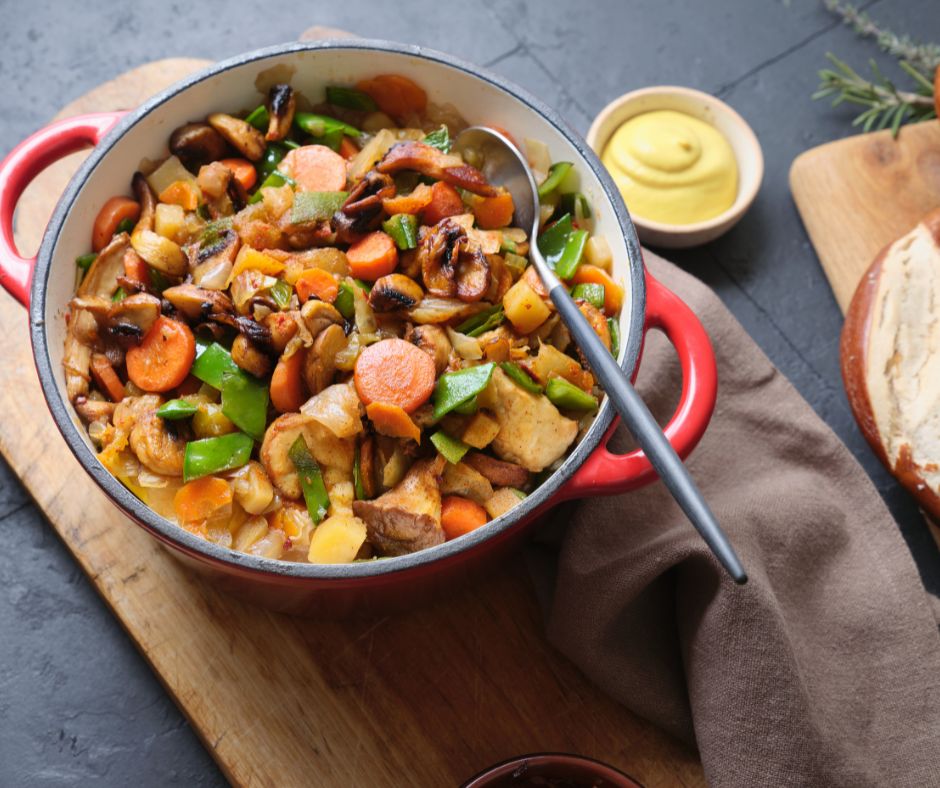
- Apple Strudel: Originally Austrian but also popular in Switzerland, this flaky apple pastry is filled with spices, cinnamon, raisin and and sometimes nuts.
- Birchermüesli: Invented in the country, this popular breakfast is made with rolled oats, grated apples, nuts, dried fruits and often raisins and served with yogurt or milk. It is usually prepared overnight.
Best drinks to try in Switzerland
Switzerland is famous for both brewing its own beer as well as making wine.
Beer
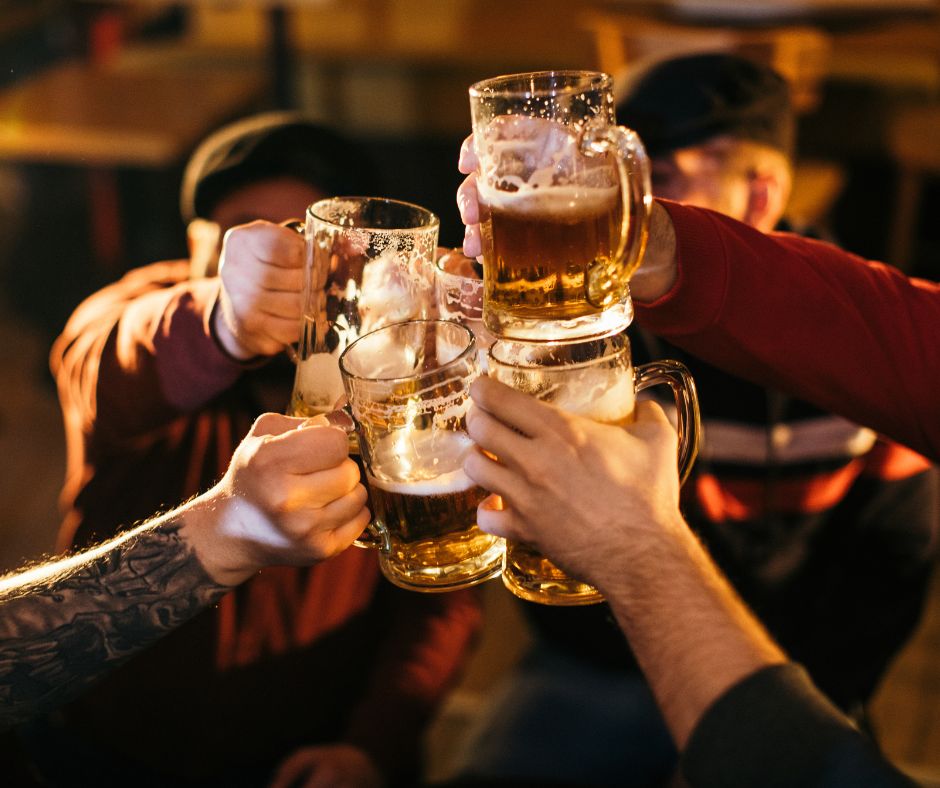
Switzerland is famous for its beer and there is a strong culture of beer gardens and pubs as well as beer festivals such as the ones in Bern or Zurich.
The most common style is lager but they also produce pilsners, wheat beers, dark beer and amber ales. The largest and oldest brewery in the country is Feldschlösschen and is located in Zurich.
The craft beer movement is gaining momentum with breweries like Brauerei Doppelleu and Brasserie du Mont-Salève producing a wide range of creative and innovative beers.
Other drinks to try in Switzerland
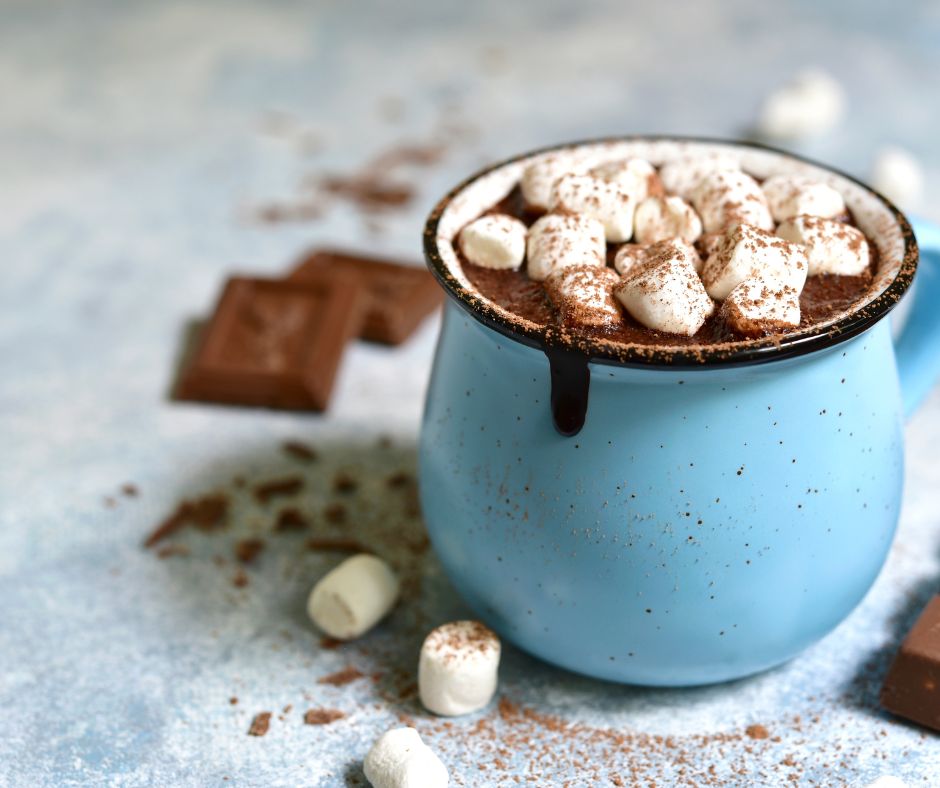
Switzerland is also famous for several other kinds of drinks:
- Hot chocolate: Nothing says winter like a cup of hot chocolate by the fireplace. Make it even better with some whipped cream on top.
- Rivella: A soft drink from Switzerland, created by Robert Barth in 1952, which is produced from milk whey.
- Cider: Made from apples or pears, a light alternative if you are not a fan of beer.
- Wine: Switzerland is home to several wine producing regions but they are quite small since only 1% of the agricultural land is used for vineyards and it is hard to find the wine outside of the country or the national carrier flights so it’s a good idea to try it while there.
- Schnapps: A traditional spirit made from fermented fruits or herbs and enjoyed as a digestif at the end of meal.
- Kirsch: A type of schnapps made from cherries that is used in various Swiss desserts and fondues.
- Flavored Teas: Switzerland has a tradition of herbal teas made from Alpine herbs and flowers such as mint, chamomile, and lemon balm.
Movies and books about or set in Switzerland
This tiny country is rarely featured in movies and books but here are a couple of references to check out.
Books about Switzerland
There are not a lot of books that reference Switzerland or that are set in the Principality.
- “Heidi” by Johanna Spyri: A classic Swiss novel and all-time best seller turned into a cartoon and a movie that tells the story of a young orphan girl called Heidi who is sent to live with her grandfather in the Swiss Alps. It has all the best elements of a bucolic story set in the idyllic landscapes of Switzerland.
- “The Magic Mountain” by Thomas Mann. Set in a Swiss sanatorium in the early 20th century, this novel explores themes of illness, philosophy, and society through the eyes of a young German man who visits the clinic.
- “The Swiss Spy“ by Peter H. Koenig: A historical thriller set during World War II, it revolves around espionage and intrigue in Switzerland.
- “Switzerland: A New History” by Sir John K. L. Gilmour: This comprehensive history book covers the political, economic, and social development of Switzerland from its early days to the present.
- “Hotel du Lac” by Anita Brookner: A novel that tells the story of a romance novelist living on the shores of Lake Geneva and the other English visitors she meets.
Movies set in Switzerland
While there are not a lot of famous movies that are about Switzerland or set in the country, several have filmed scenes that depict the country’s amazing landscapes.
- James Bond’s Goldfinger (1964) and On her Majesty’s Secret Service (1969) were filmed in the country. The former has a famous car chase through the Furka Pass where Bond tracks the villain and the latter has a spectacular skiing scene taking place in the Schilthorn mountain, home to the Piz Gloria restaurant. The landscapes shown in both are stunning.
- North face (2008): German movie based on the story of two climbers who attempted to scale Eiger’s north face in 1936.
- Clouds of Sils Maria (2014): Drama set in the village of the same name focused on the main character’s take on her career choices while enjoying the peace of the Alps.
- Youth without youth (2017): A Francis Ford Coppola movie partly set in Switzerland that follows an old man who mysteriously regains his youth.
